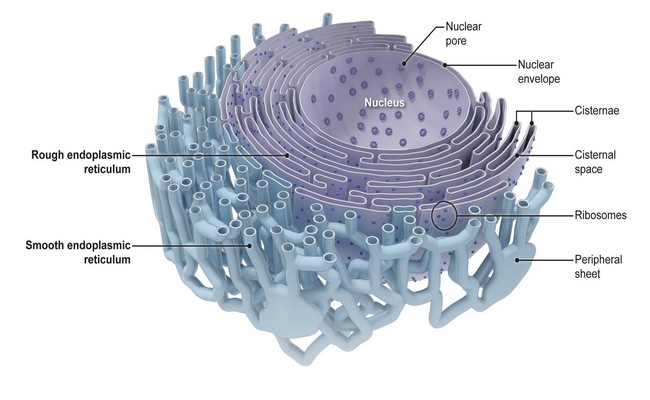What is Endoplasmic Reticulum(ER)?

Types of Endoplasmic Reticulum(ER):
There are two types of ER which are explained in the following:
1. Rough Endoplasmic Reticulum:
Rough endoplasmic reticulum because it has ribosomes attached to the cytoplasmic side of the membrane.
2. Smooth Endoplasmic Reticulum:
The other region is called smooth ER because it not attached ribosomes.
All the functions of the endoplasmic reticulum(ER) have pointed out below:
- It acts as a manufacturing and packaging system in the cell.
- ER is mainly responsible for the transportation of proteins and other carbohydrates to another organelle.
- It provides an increased surface area for cellular reactions.
- It helps in the formation of the nuclear membrane during cell division.
- It plays an important role in the formation of the skeletal framework.
- ER plays a key role in the synthesis of proteins, lipids, glycogen, and other steroids like cholesterol, progesterone, testosterone, etc.
- In certain leukocytes (white blood cells), the rough ER produces antibodies.
- In pancreatic cells, the rough ER helps to produce insulin for the body.
- Smooth ER plays a key role in the synthesis of steroid hormones from cholesterol.
- In cells of the liver, it helps the detoxification of drugs and harmful chemicals.
Golgi apparatus is a smooth surfaced, cistern lie composed of a membrane that is present in the outer nuclear membrane and apex of the cell.

Functions of Golgi body or Golgi Apparatus:
Some key functions of the Golgi body or Golgi apparatus have listed in the following:
- Golgi apparatus helps to process and bundle macromolecules like proteins and lipids as they are synthesized within the cell.
- Golgi apparatus is sometimes compared with a post office inside the cell since one major function is to modify, sort, and package proteins to proper destinations.
- They transport lipids throughout the cell for the creation of lysosomes.
- They begin packing, concentration, and storage of secretory products released by secretory cells.

Maria Khatun Mona is a Founder and Editor of Nursing Exercise Blog. She is a Nursing and Midwifery Expert. Currently she is working as a Registered Nurse at Evercare Hospital, Dhaka, Bangladesh. She has great passion in writing different articles on Nursing and Midwifery. Mail her at “maria.mona023@gmail.com”
